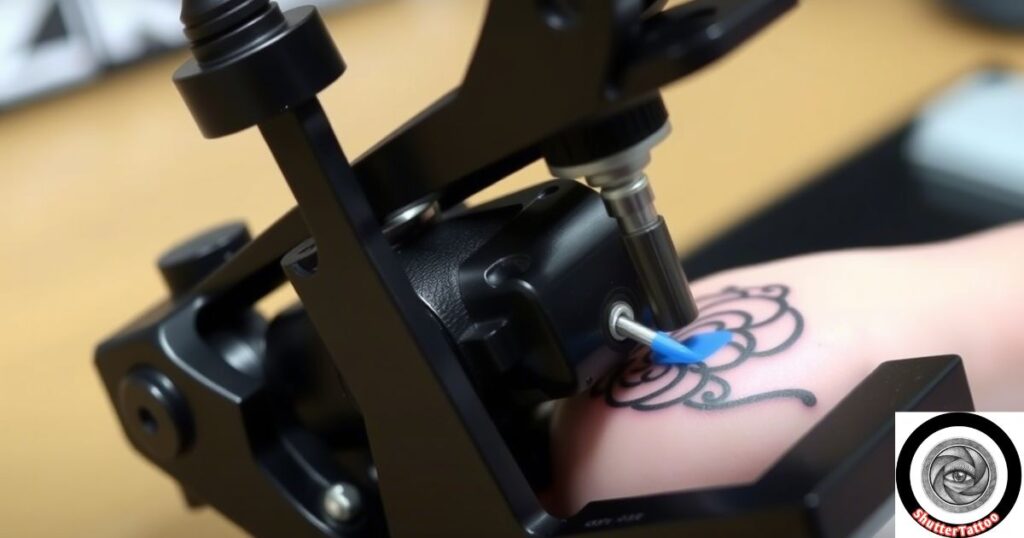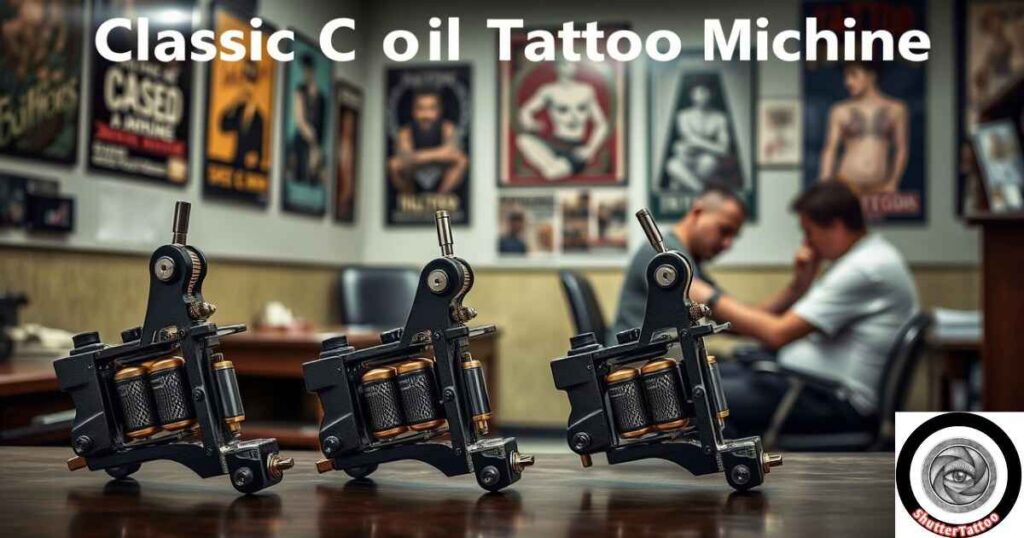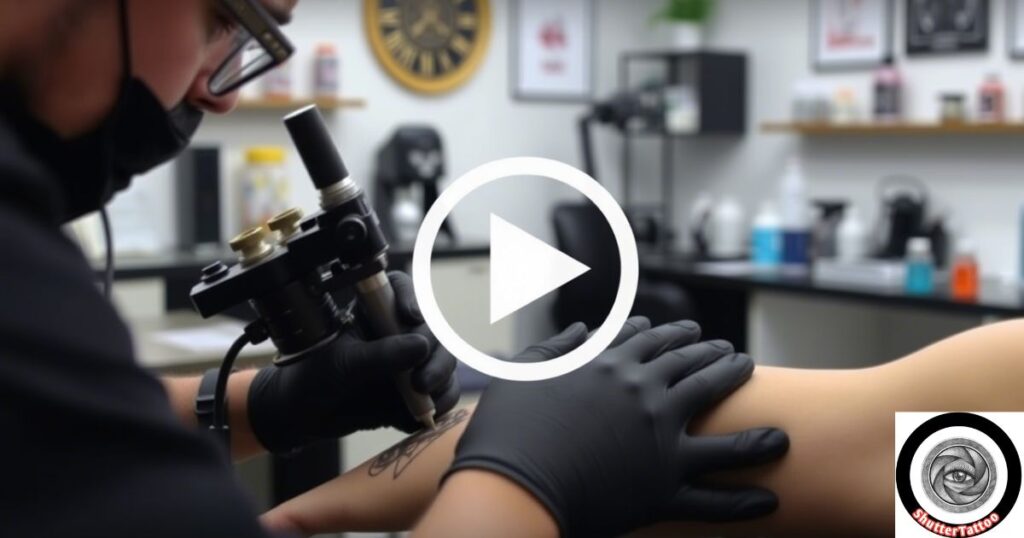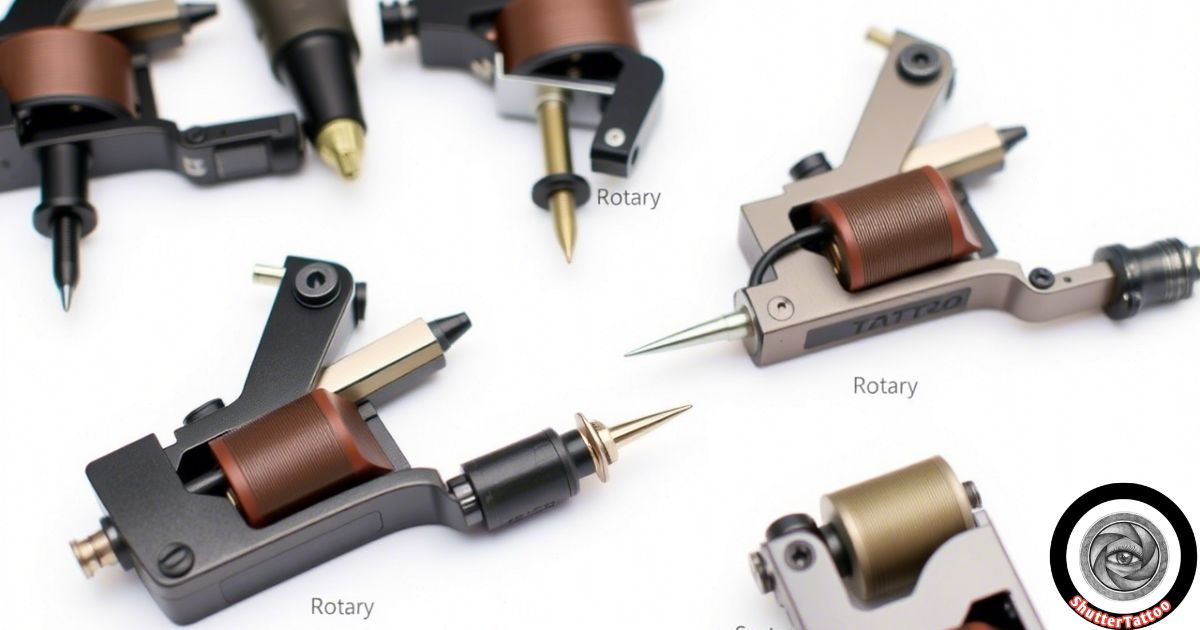Did you know that the type of tattoo machine you choose can significantly impact both the quality of your work and your comfort during sessions? Selecting the right equipment is crucial for achieving optimal results and ensuring client satisfaction. In this comprehensive guide, we’ll explore the various types of tattoo machines—coil, rotary, and pen-style—delving into their unique features, advantages, and ideal applications.
Whether you’re a seasoned artist or just starting your journey, understanding these differences will empower you to make an informed decision, enhancing your artistry and efficiency. Let’s dive in and discover which tattoo machine aligns best with your creative needs and professional goals.
What Are Tattoo Machines and How Do They Work?

Tattoo machines are handheld devices designed to insert ink into the skin, creating permanent designs. They operate by rapidly moving needles in and out of the skin, depositing ink into the dermis layer. The primary types of tattoo machines include coil, rotary, and pen-style machines, each utilizing different mechanisms to achieve this process.
The Anatomy of a Tattoo Machine: Key Components Explained
A typical tattoo machine comprises several essential components:
- Frame: The structure that holds all parts together.
- Coils (in coil machines): Electromagnets that drive the needle’s movement.
- Armature Bar: A metal bar that moves in response to the electromagnetic field, driving the needle.
- Needles: The instruments that penetrate the skin to deposit ink.
- Power Supply: Provides the necessary electrical energy to operate the machine.
Understanding these components helps artists maintain their equipment and troubleshoot issues effectively.
How Tattoo Machines Transform Ink into Art
Tattoo machines work by rapidly moving needles in and out of the skin, depositing ink into the dermis layer. This process creates permanent designs as the ink particles become encapsulated by the body’s immune response, ensuring longevity and stability of the artwork.
The Evolution of Tattoo Machines: From Manual to Modern
Tattooing has evolved from manual methods, where needles were hand-poked into the skin, to sophisticated electric machines. The first electric tattoo machine was patented in the late 19th century, revolutionizing the industry by introducing more consistent and efficient techniques. Today, advancements continue with the development of rotary and pen-style machines, offering artists a variety of tools to suit their styles.
Coil Tattoo Machines: The Classic Workhorse

Coil tattoo machines are renowned for their power and precision, making them a staple in traditional tattooing.
How Coil Tattoo Machines Deliver Precision and Power
Coil machines utilize electromagnetic coils to move the armature bar and attached needles. When the machine is activated, an electric current passes through the coils, creating a magnetic field that pulls the armature bar down, driving the needles into the skin. This mechanism allows for precise control over needle depth and speed, essential for detailed line work.
Read This Blog: Tattoo Armrest: The Ultimate Guide for Artists and Clients
Best Uses for Coil Machines: Line Work, Shading, and Coloring
Coil machines are versatile and can be configured for various tasks:
- Lining: Their rapid needle movement makes them ideal for creating clean, crisp lines.
- Shading: By adjusting the machine’s settings, artists can achieve smooth shading and gradients.
- Color Packing: The power of coil machines allows for efficient and solid color saturation.
Pros and Cons of Coil Tattoo Machines: Is It Right for You?
Pros:
- Customization: Highly adjustable to suit individual artist preferences.
- Power: Strong performance suitable for various tattooing styles.
Cons:
- Weight: Heavier, which can lead to hand fatigue during long sessions.
- Noise: Produces a loud buzzing sound, which might be unsettling for some clients.
Rotary Tattoo Machines: The Quiet Innovators
Rotary tattoo machines have gained popularity for their smooth operation and user-friendly design.
Why Rotary Tattoo Machines Are Gaining Popularity
Rotary machines are favored for their lightweight build and quieter performance. They offer a more straightforward mechanism, making them easier to maintain and operate, which appeals to both novice and experienced artists.
How Rotary Machines Work: Smooth and Consistent Performance
These machines use a rotating motor to drive the needle’s movement, resulting in a consistent and smooth operation. The continuous motion allows for even ink distribution, which is beneficial for both lining and shading.
Ideal Applications for Rotary Tattoo Machines

Rotary machines are versatile and can be used for:
- Lining: Capable of producing clean lines with less trauma to the skin.
- Shading: Excellent for creating smooth gradients and subtle shading.
- Color Packing: Efficient in depositing solid colors with minimal skin irritation.
Pen Tattoo Machines: The Modern Marvel
Pen-style tattoo machines have revolutionized the industry with their ergonomic design and advanced features.
What Makes Pen Tattoo Machines a Favorite Among Artists?
Pen machines mimic the feel of drawing with an actual pen, providing a comfortable grip and enhanced control. Their sleek design reduces hand fatigue, making them ideal for lengthy sessions.
How Pen Machines Combine Precision and Comfort
Equipped with advanced motors, pen machines offer precise needle control, allowing for intricate detailing. The ergonomic design ensures a natural hand position, enhancing comfort and reducing strain.
Are Pen Tattoo Machines Worth the Investment?
Pros:
- Ergonomics: Designed for comfort, reducing artist fatigue.
- Versatility: Suitable for various tattooing styles, from fine lines to shading.
Cons:
- Cost: Generally more expensive than traditional machines.
- Maintenance: May require specific parts and upkeep.
Pneumatic Tattoo Machines: The Air-Powered Alternative
Pneumatic tattoo machines offer a unique approach by utilizing compressed air to drive the needle mechanism. This design provides several benefits that distinguish them from traditional electric machines.
How Pneumatic Tattoo Machines Use Air Pressure for Precision
These machines operate by channeling compressed air through the device, creating a smooth and consistent needle motion. This controlled movement allows artists to achieve precise lines and shading with reduced skin trauma.
Benefits of Pneumatic Machines: Lightweight and Hygienic
Pneumatic machines are notably lightweight, reducing hand fatigue during extended sessions. Additionally, their design allows for complete sterilization in an autoclave without extensive disassembly, enhancing hygiene and simplifying maintenance.
Also Read This Blog: Women Sleeve Tattoo Ideas: The Ultimate Guide to Feminine Arm Art (2025)
When to Choose a Pneumatic Tattoo Machine Over Others
Opt for a pneumatic machine if you prioritize a lightweight tool and stringent hygiene standards. However, consider that they require an external air compressor, which may affect portability and setup complexity.
Choosing the Right Tattoo Machine for Your Style
Aligning your tattoo machine with your artistic style enhances efficiency and the quality of your work.
How to Match a Tattoo Machine to Your Artistic Needs
Consider the type of work you specialize in:
- Lining: Coil machines offer the power needed for bold lines.
- Shading and Color Packing: Rotary machines provide smooth and consistent needle movement, ideal for shading and color work.
- Detailed Work: Pen-style machines offer precision and comfort, beneficial for intricate designs.
Factors to Consider: Speed, Weight, and Ergonomics
Evaluate the following when selecting a machine:
- Speed: Ensure the machine’s operating speed aligns with your technique.
- Weight: Lighter machines reduce fatigue during long sessions.
- Ergonomics: A comfortable grip enhances control and precision.
Beginner vs. Pro: Which Tattoo Machine Suits Your Skill Level?
- Beginners: Rotary machines are user-friendly and versatile, making them suitable for those new to tattooing.
- Professionals: Experienced artists might prefer coil machines for their customizable settings and suitability for various techniques.
Maintaining Your Tattoo Machine: Tips for Longevity
Proper maintenance of your tattoo machine ensures consistent performance and extends its lifespan.
How to Clean and Care for Your Tattoo Machine
- Regular Cleaning: Disassemble and clean components after each session to prevent ink buildup and contamination.
- Lubrication: Apply appropriate lubricants to moving parts to ensure smooth operation.
Common Issues and Troubleshooting Tips
- Inconsistent Needle Movement: Check for loose connections or worn components.
- Overheating: Ensure proper voltage settings and avoid prolonged continuous use.
Why Regular Maintenance is Key to Consistent Performance
Routine upkeep prevents unexpected malfunctions, maintains hygiene standards, and ensures your machine operates at peak efficiency, ultimately contributing to the quality of your artwork.
FAQ
What’s the Difference Between Coil and Rotary Tattoo Machines?
Coil and rotary tattoo machines differ in mechanics, performance, and user experience.
- Mechanics: Coil machines use electromagnetic coils to move the needle, creating a distinctive buzzing sound. Rotary machines employ a rotating motor for needle movement, resulting in quieter operation.
- Performance: Coil machines offer a punchy needle movement due to the electromagnetic current powering the on-off circuit. In contrast, rotary machines provide a smoother and more consistent needle motion, which can be beneficial for certain tattooing techniques.
- User Experience: Coil machines are typically heavier and may cause more hand fatigue during extended sessions. Rotary machines are generally lighter and produce less vibration, making them more comfortable to use over long periods.
Can Beginners Use Professional-Grade Tattoo Machines?
Yes, beginners can use professional-grade tattoo machines, but it’s essential to consider the following:
- Complexity: Professional machines may have advanced features requiring a learning curve.
- Cost: High-quality machines are a significant investment; ensure you’re committed to tattooing before purchasing.
- Skill Development: Starting with a user-friendly machine can help you focus on honing your technique before transitioning to more complex equipment.
How Much Should You Spend on a Tattoo Machine?
The amount you should spend on a tattoo machine depends on your experience level and commitment:
- Beginners: Affordable options range from $100 to $300. These machines offer basic features suitable for learning.
- Intermediate to Professional Artists: Investing in higher-end machines priced between $400 and $1,000 can provide enhanced performance and durability.
Conclusion
Selecting the right tattoo machine—be it coil, rotary, or pneumatic—is pivotal in shaping your artistic journey and ensuring client satisfaction. By understanding each type’s unique features and aligning them with your style, you can elevate your craft to new heights.
Ready to make an informed choice? Explore our in-depth guides and join the conversation by sharing your experiences in the comments below. Remember, the perfect tattoo machine isn’t just a tool; it’s an extension of your creative expression. Choose wisely, and let your art flourish.

